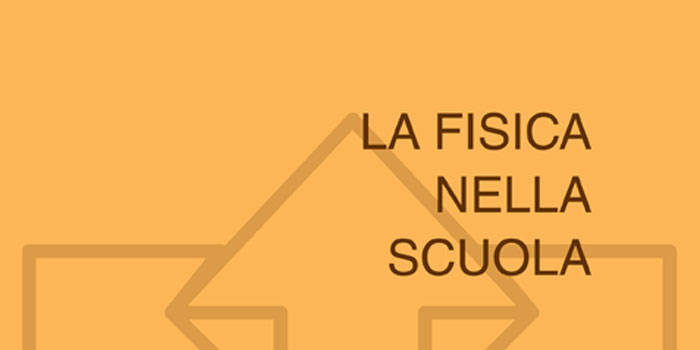Articoli rivista
Note di laboratorio
 Anno XLIX - n.1 - gennaio/marzo 2016
Anno XLIX - n.1 - gennaio/marzo 2016 L’ipotesi della natura elettromagnetica della luce e la valutazione “classica” della sua velocità
Retracing the steps which led to formulate the hypothesis on electromagnetic nature of light, two circuits (RL, RC) in alternating current regimen were observed to measure the constants of vacuum permeability and permittivity, yielding μ0 = (1,27 ± 0,51)·10−6 H/m, […]
 Anno XXV - n.3 - luglio/settembre 1992
Anno XXV - n.3 - luglio/settembre 1992 Lo spessore del segno di una matita
In this note is described a very simple experiment to estimate the thickness of the graphite layer deposited on paper by a writing pencil. […]
 Anno XXX - n.2 - aprile/giugno 1997
Anno XXX - n.2 - aprile/giugno 1997 Lo spessore di una bolla di sapone
Measuring the thickness of a soap bubble is an intriguing problem that can be solved – at least with respect to the order of magnitude – with scales of 0.01 grams sensitivity (or better). Solving this problem at secondary school level and up is a motivating activity that requires the students to concretely exercise their inventiveness. […]
 Anno XXIX - n.4 - ottobre/dicembre 1996
Anno XXIX - n.4 - ottobre/dicembre 1996 Magia con la luce
This note describes an alternative classroom demonstration of Newton’s classic method to mix, by means of a prism, rainbow colours to get white light again. […]
 Anno XXXII - n.1 - gennaio/marzo 1999
Anno XXXII - n.1 - gennaio/marzo 1999 Membrane saponose e loro tensione superficiale
Soap bubbles and soap films are interesting and amusing. This article describes an experiment on soap films which can be used at secondary school level that involves forming a film with the shape of a deformed quadrilateral in an area bounded by two rigid straws and two pieces of thread of equal length attached to their ends (Fig. […]
 Anno XXVII - n.1 - gennaio/marzo 1994
Anno XXVII - n.1 - gennaio/marzo 1994 Misura della circonferenza terrestre col metodo di Eratostene.
This article describes an experiment done by first-year secondary school pupils, who measured me radius of the Earth with the method of Erathosthenes. For this purpose, cooperation was sought for and put into effect on long European distances, ranging from the island of Pantelleria in the Mediterranean to Goteborg in Sweden. […]
 Anno XLVII - n.2 - aprile/giugno 2014
Anno XLVII - n.2 - aprile/giugno 2014 Misura della componente orizzontale del campo magnetico terrestre mediante una bilancia elettromagnetica costruita in casa
We report an experiment for measuring the horizontal component of the Earth’s magnetic field using easily available material, explaining how some conditions that optimize the results were obtained using a rectangular coil. […]
 Anno XXXI - n.3 - luglio/settembre 1998
Anno XXXI - n.3 - luglio/settembre 1998 Misura della costante h/e (costante di Planck/carica elementare) mediante diodi L.E.D.
By means of some LEDs (Light Emitting Diodes) used as quasi-monochromatic light sources at different wavelengths and measuring their forward voltage at a fixed value of the current one can obtain the ratio of Planck’s constant to elementary charge with an estimated error of the order of 6%. […]
 Anno XXVIII - n.3 - luglio/settembre 1995
Anno XXVIII - n.3 - luglio/settembre 1995 Misura della lunghezza d’onda della luce con un disco microsolco
This article describes how it is possible to measure the light wavelength using a phonograph microgroove disc. […]
 Anno XLVII - n.3 - luglio/settembre 2014
Anno XLVII - n.3 - luglio/settembre 2014 Misura della velocità della luce con mezzi modici
A simple way of measuring the speed of light in an educational context using one or a couple of mirrors and some easily available common electronic equipment is described. […]
 Anno XLVIII - n.3 - luglio/settembre 2015
Anno XLVIII - n.3 - luglio/settembre 2015 Misurare pi-greco
This article describes an activity aimed at measuring the value of pi. Five methods, were used, all of them easy to perform. All results agree with the known value within 1%. The activity is suitable to introduce the concept of measurement uncertainty at the beginning of Physics Classes. […]